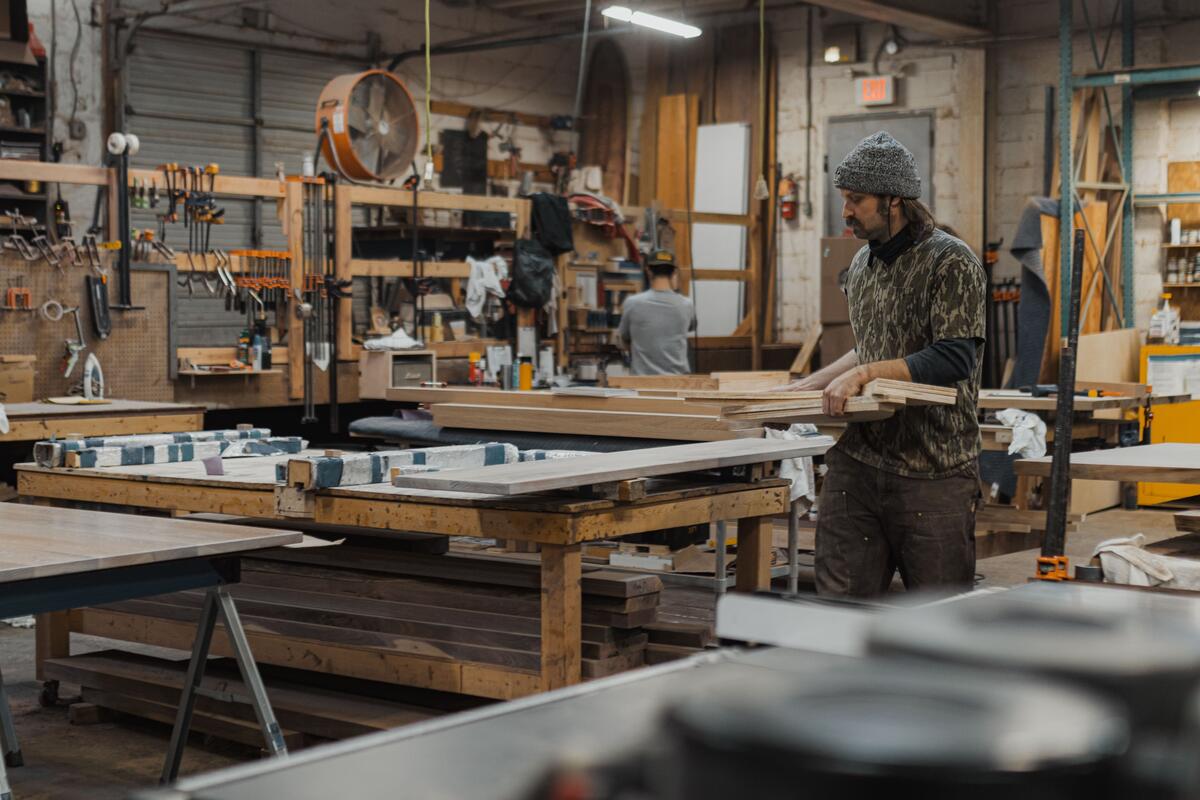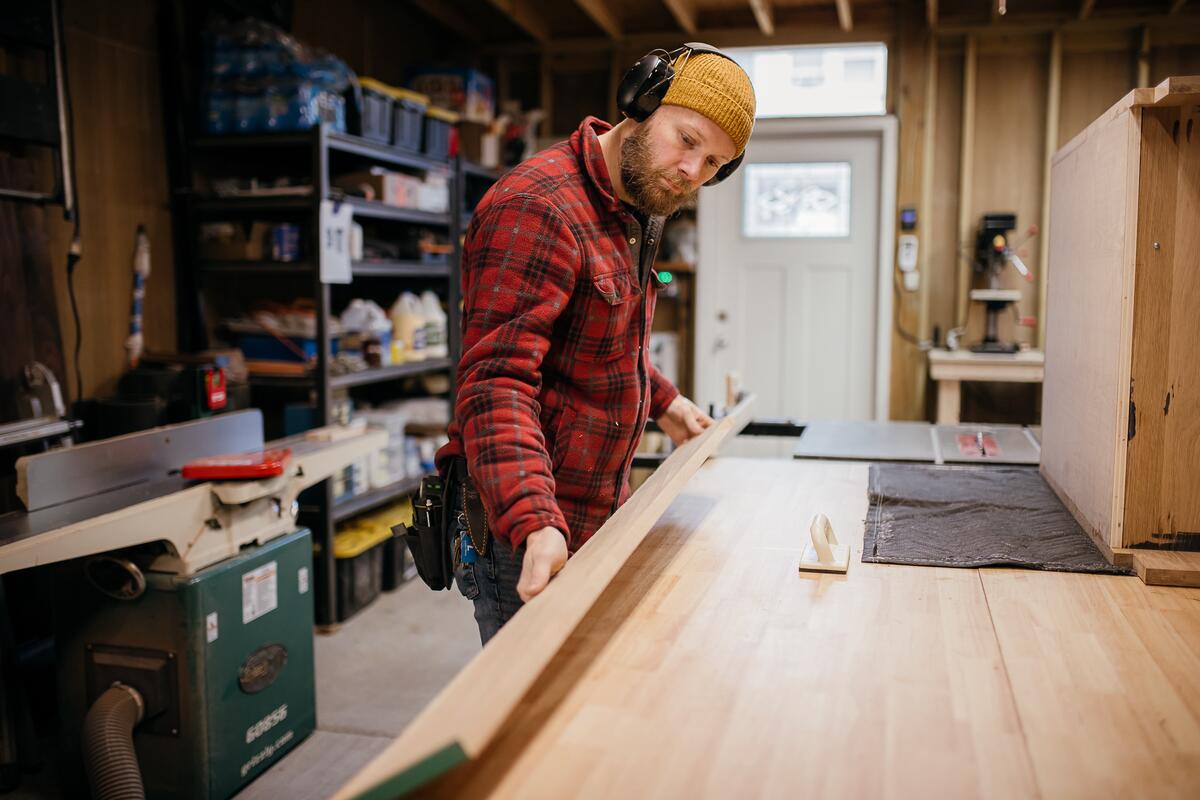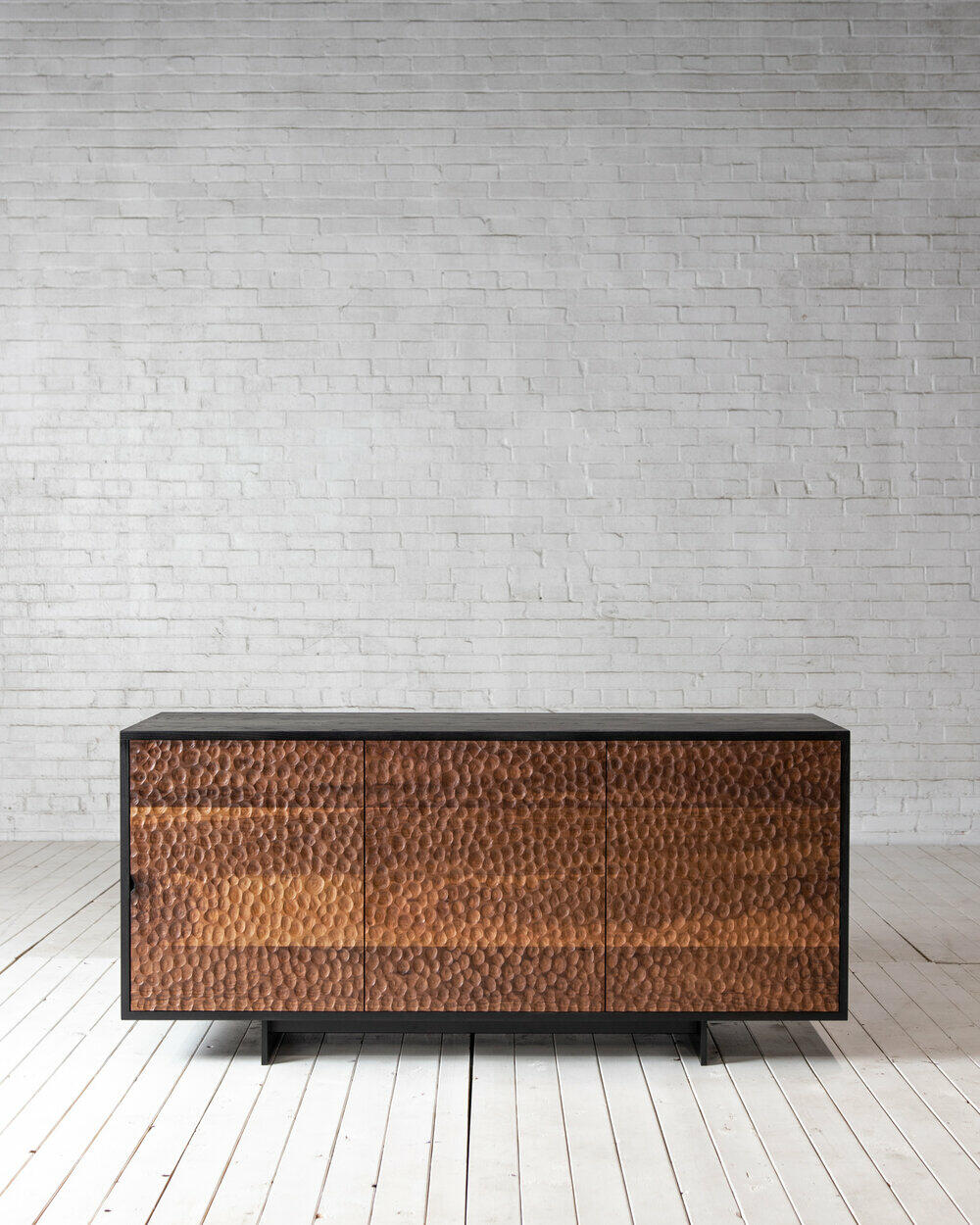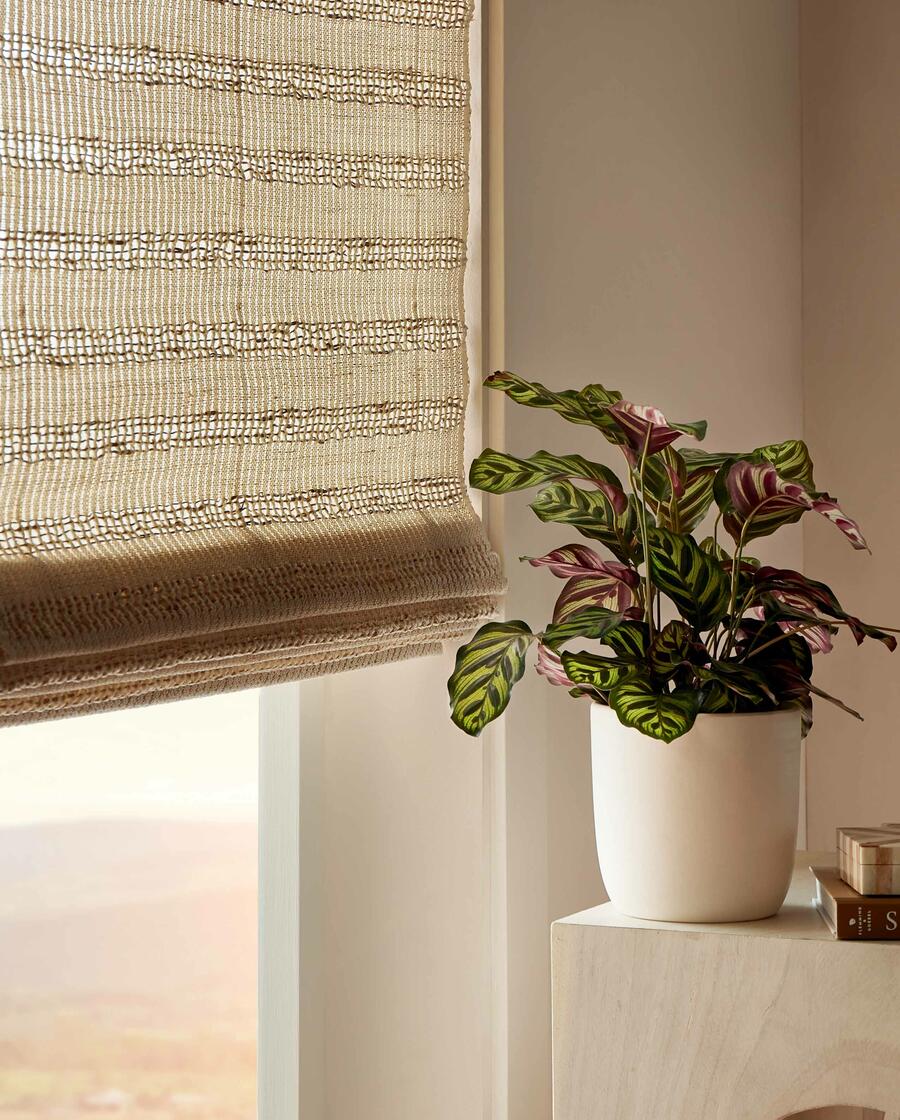After trying his hand at advertising, commercial interior design, and a stint running a stuffed-animal company, Ethan Abramson confronted the inevitable: It was time to get into woodworking.
This was 2008—peak financial crisis—and Abramson, a native New Yorker, was looking for a line of work that had work, and that was a little more fulfilling than office drudgery. “Furniture came to mind,” he recalls. “It’s something that I could build with my own hands—I didn’t have to send anything overseas or climb up a corporate ladder, and at the end of the day I’d have a physical product I could show to someone.” Abramson started working in a woodshop, renting space during off-hours to hone his craft. After a few years, he had enough clients to go out on his own. Sixteen years later, he runs a shop out of Long Island, producing his own line as well as custom pieces for designers and consumers alike.

Abramson is not alone. We seem to be in the midst of a mini-boom for custom—mostly wood—furniture makers. Many of them are career changers, laid off during the Great Recession or simply dissatisfied with the corporate shuffle. Others took Covid as a signal to go from hobbyist to full-time entrepreneur. They market themselves on Instagram and TikTok, trade tips on Reddit, and chat about their experience on podcasts—Abramson himself hosts one. There’s no specific demographic, but many of these makers are men, often somewhere between the ages of 30 and 50. (If there is an unofficial uniform, it’s the flat-brimmed baseball cap, seemingly ubiquitous in press photos and “About Us” pages.)
Hard numbers are difficult to come by, but a scan of Google results, Houzz vendors and Etsy listings points to a growing category—on Etsy alone, some searches for custom home goods have shot up as much as 4,000 percent in recent years. It’s also instructive to look at the growth of individual businesses. In 2010, Paul Mencel was a musician in a buzzy rock band, looking to make some cash between tours, so he turned to woodwork and started making custom pieces for friends. Four years later, he had enough clients to start a business. Ten years later, Mencel’s company, Philadelphia Table Co., has a staff of seven—and he says his business is growing at a rate of 20 percent, year over year.
“There’s a huge trend of people looking for more artisanal, hand-crafted things—whether that’s coffee, beer, or shopping at farmers markets instead of grocery stores,” says Mencel. “They want to buy ethical products, and when they shop for their homes, there’s a whole generation of people shying away from big retail chains, saying, ‘I don’t believe in their values, and their stuff is crap.’ … They want to buy something that means something.”
There’s no doubt that the world of furniture retail is shifting radically. Old-school independent stores are fading away, e-commerce players are recovering from the end of the zero-interest-rate era, and mass retailers are struggling to capture the attention of a rising generation. It’s clear that a slice of the pie is up for grabs. Could custom makers snatch it?
THE MAKERS
Many furniture makers get into the profession partially as a way to avoid sitting in front of a laptop all day. Ironically, the biggest force behind their skyrocketing numbers is technology.
To be fair, not all of it is on a screen. Over the past two decades, much of the woodworking equipment required to start a custom furniture operation has gotten cheaper, smaller and more accessible. “Never before has the barrier to entry been so low,” says Abramson. “Machinery that used to be available only to big corporations is now commonplace on the consumer market. A CNC machine used to be something that only a big company would have; now anyone can buy a professional-grade CNC and put it in their garage—that changes the way they do business.”
Ultimately, those who go pro will end up spending tens of thousands of dollars on workshop equipment and space. But the startup costs are lower than they’ve ever been, and a skilled hobbyist can produce work of real quality from a garage, creating a bigger pipeline of makers who may one day quit their day jobs. “A lot of the growth in this industry is from people who do this part-time,” says Abramson. “They’re feeling it out and deciding if they want to go full-time.”

But the more substantial source of change has undoubtedly come from the internet; specifically, the social internet of the past decade, which has provided makers with a full stack of tools to learn the nuances of the trade, market themselves and transact. Custom furniture workrooms, which were historically very much local businesses, now sometimes find themselves competing for customers on a national scale. Many are located in areas of the country where labor costs are (comparatively) inexpensive, selling to coastal and urban demographics at a higher price point. “Most of our stuff goes to New York and California, some to Texas and Florida, but rarely do we sell stuff in our local market,” says Josh Cox of Bricker & Beam, the Columbia, South Carolina–based shop he founded in 2012. “We reach people with social media and the internet, and can still beat prices just by the nature of where we are and the cost of living being lower.”
That ecosystem creates a class of makers who need not only hand skills but digital chops to thrive. More than a few, like Dennis Turbeville of Washington, D.C.–based shop Austen/Morris, have a background in advertising and marketing. (“It was a leg up,” he says. “The business has always looked good to consumers—even when I was [doing the work] in my basement.”) Many develop a robust presence on social media. Abramson has 74,000 followers on Instagram, where he posts what you might call “makefluencer” content about techniques and shop equipment.
Ryan Rademacher runs a comparatively large custom furniture business, Lumber2Love, in Grand Rapids, Michigan, with 25 employees working out of a 20,000-square-foot workroom. Like others, he was a career changer, leaving behind a job coaching college track-and-field in 2019. And like others, robust digital marketing—Lumber2Love runs extensive Instagram and Google Ads campaigns—is key to the company’s success. It takes more than just ads, though, to stand out.
“I could find 20 people right now that could build me whatever I want online,” says Rademacher. “It’s the presence you put out there, it’s getting good reviews, it’s offering shorter lead times—long lead times turn a lot of people off. So much goes into [the strategy] when you’re competing nationally.”
THE BUYERS
That’s where the supply is coming from. What about the demand?
The appeal of custom furniture is nothing new—especially for designers. But again, you can probably thank the internet for stoking its popularity among a wider audience. As more makers have become adept at communicating their offerings online, consumers have become more comfortable taking a chance on what has historically been a dauntingly complex purchase.

It turns out, if you show customers the process of building a one-of-a-kind piece through social channels and a great website, give them clear pricing, and make yourself available to answer questions, people will jump through the necessary hoops to buy custom. Covid added some extra fuel to the fire: Consumers were focused on improving their homes, glued to their phones, fed up with the long lead times quoted by retail chains, and flush with stimulus money.
Though technology has fueled this surge, many makers take a more old-school approach when it comes to taking orders. Few, if any, have a complicated online ordering system where customers spec out a 3D model, then click to buy. The sales process is largely a high-touch experience, with a lot of communicating through phone, email, Instagram messages or texts.
Rademacher says that Lumber2Love essentially runs its customer service operation via text (his website includes separate numbers to call or message). “You send pictures back and forth, have a quick conversation and gain a level of trust pretty quickly,” he says of the process. “[People get frustrated] if they’re looking at a retailer’s site and it takes a long time to [get an answer], even for simple questions. Getting your question answered very quickly gets them engaged.”
Consumer dissatisfaction with traditional retail options is another driver for the growth of custom makers. Some customers might crave a more direct connection with the people who are making (or at least selling) them stuff for their home—the kind of experience now-struggling independent retailers might have once provided. Other customers are frustrated by the quality of retail furniture. That’s not to say that every brand is peddling subpar product, but as the national media runs story after story about why mass-market furniture has gotten so shoddy, it’s hard to escape the nagging sense that while retailers have perfected their design chops in order to produce furniture that looks extremely high-end, quality has taken a hit. The result is the odd phenomenon—call it a reverse dupe—of consumers finding a piece they like from RH or Arhaus, then reaching out to a custom workshop to make the same thing, only from better materials at a higher price. This practice, several furniture fabricators told Business of Home, is extremely common.
“People are starting to care more about the quality of what they’re buying. West Elm seemed like a decent option 10 years ago, but now everyone is like, ‘Everything is falling apart!’” says Turbeville. “If West Elm is the new Ikea, and you have to spend a lot of money to get something decent anyway, why not go custom?”
Finally, demographics play a role. Much of the consumer audience for custom shops is what you might expect: an upwardly mobile millennial, old enough to buy their first big home and comfortable enough with digital commerce to order a custom table via text. Though millennials have famously been held back by recessions and a tight housing market, there are a lot of them, and as they age out of Ikea and into their homemaking years, many are open to exploring options outside of traditional retail brands.
However, many custom furniture makers have a substantial number of baby boomer clients as well—shoppers who are often flush with cash and looking for unique pieces that fit their new life as they downsize into smaller homes. Many have a romantic affection for American craftsmanship. “They might be reminiscing about a table they purchased when they first started their family,” says Mencel. “They have a kind of nostalgia about hardwood furniture, heirlooms and things lasting forever.”
THE LIMITS
We are in the midst of a custom furniture boomlet, but it has its limitations. One is of a type: The surge in woodworking entrepreneurs is not accompanied by crazy growth among upholsterers. This is a revolution largely built on lumber.

Part of it may simply be that, for a certain class of restless young person, opening a woodshop has a kind of romantic appeal that starting an upholstery business might not. It also may be more straightforward: Upholstery involves a more multifaceted skill set and sourcing network for raw materials (you have to work with foam and fabric as well as wood). Both woodwork and upholstery take years to truly master, but the steepness of the learning curve might play a role.
The demand side is also more complicated: While there is undeniably an appetite among consumers to choose fabric and hardware on basic upholstery shapes, few and far between are homeowners who have the sophistication and confidence to ask for eight-way hand-tied springs, English arms or a tight back. And in general, upholstery workrooms aren’t dying to deal with these consumers anyway. An informal survey of a few prominent shops across the country suggested that, while some will do jobs for the stray homeowner, the focus remains on designers.
The other limitation of custom woodworking business growth is that of scale. Most of the entrepreneurs driving this movement get into the profession because they want to stay close to the work, not take over the world.
A fairly successful operation will do $1 million in annual revenue. Some will get into the high single-digit millions, but many furniture makers will be happy to stay lean and mean, bringing in less and holding on to what sets them apart from large, impersonal retailers. “I don't necessarily want to get too much bigger,” says Rademacher. “I just want to refine what we do and get better at what we do. Because at some point, you will turn into the other companies. It’s just something you have to do. And I don't know if I ever want to do that.”
A little back-of-the-envelope math: It would take 3,000 pretty-darn-successful custom furniture shops to measure up with RH’s $3 billion in annual revenue, and four times as many to compete with Wayfair’s $12 billion. Custom furniture may be booming now—but that level of growth would be an explosion.
However, just because an army of custom makers may not topple Williams-Sonoma anytime soon doesn’t mean that the growth in the category is meaningless—far from it. “The big furniture companies are bloated, just floating along,” says Mencel. “Maybe they don't need to pivot. But maybe they will soon have to, if they’re starting to see part of their market share going elsewhere.”





























